The Feud: The Hatfields and McCoys: The True Story Read online
Page 32
Tennis Hatfield, sheriff of Logan County. (Courtesy of William Keith Hatfield)
DEVIL ANSE DIED OF PNEUMONIA at the age of eighty-two on January 6, 1921. An expensive Italian marble monument topped by a life-size statue marks his grave in the Hatfield Cemetery on Main Island Creek and identifies him using his de facto rank: Captain. Vicey died eight years later at the age of eighty-seven, also of pneumonia, and is buried beside him. The monument lists the names of their thirteen children.
Cap and Elliott were estranged for years. On his deathbed, Devil Anse requested that they forgive each other. At his funeral, the two brothers shook hands as tears ran down their faces. Beside his father’s grave, Cap, the fierce feud lieutenant, told Uncle Dyke that he had made peace with God and wanted to be baptized. “I will baptize you, boy,” the old preacher told him, “in the very hole whar I baptized yore pappy.” Raising his hands over his head, Cap declared to the riveted crowd gathered there to say farewell to Devil Anse that he was finished with hatred and fighting and that if any man wanted his life, he would not resist.4
Vicey Hatfield and family in front of Devil Anse’s grave. (Courtesy of Mark and Arabel E. Hatfield)
Devil Anse’s funeral, January 6, 1921. (Courtesy of William Keith Hatfield)
Some five thousand mourners attended Devil Anse’s funeral at his home on Main Island Creek. (Dr. Coleman C. Hatfield Collection, courtesy of Mark and Arabel E. Hatfield)
Cap lived until August 1930, when he died at Johns Hopkins Hospital in Baltimore from a brain tumor or, as some contend, a bullet fragment pressing on his brain.
BIG JIM MCCOY moved his family to Pikeville, where he and his wife, Melissa, raised their nine children and where he served as a police officer. He and Devil Anse’s youngest son, Tennis, the sheriff of Logan County, reconciled in 1928 and were photographed together.
Sally died around 1894, though no one knows the exact date or cause. Her funeral was performed about a decade later by William Tyree, the pastor of the Methodist church in Pikeville, at the request of Big Jim. Randall died on March 28, 1914, in the Pikeville home of his grandson Melvin, Tolbert’s orphaned son. Randall had been severely burned after stumbling into a fireplace the previous fall. He was still famous enough that his death merited a brief notice in the New York Times.5
Among the McCoys’ successes, Harmon’s great-grandsons (via his son Lark) Joe “Mix” McCoy and Leonard “Tab” McCoy started the Caney Branch Coal Company in the same Kentucky hollow where Harmon was killed during the Civil War. This grew into the McCoy Caney Coal Company, based in Phelps. The two became millionaires and did much to improve the town. They eventually sold the company and relocated to Lexington, Kentucky. In 1976, they erected a granite monument beside the graves of the fallen McCoys at the family homestead on Blackberry Creek.6
FOLLOWING THE FEUD, Dan Cunningham maintained a busy and diverse career. In 1902, while serving warrants and arresting violators of the injunctions against union organizing in the New River coalfields, he was involved in several spectacular gun battles with striking miners, including the battle of Stanaford. While six union sympathizers were killed in that battle, Cunningham remained impervious to the whizzing bullets. In her autobiography, the labor organizer Mother Jones derided him as a “big elephant.”
After retiring from the U.S. Marshal Service, he served as a Charleston city detective, as a special police officer for the Kanawha and Michigan Railroad, and as a deputy game warden for the West Virginia Game, Fish, and Forestry Commission. He was a member of the Kanawha County Board of Examiners for teachers for eight years.
In 1904, McClure’s Magazine, the national periodical credited with launching muckraking journalism, ran a feature on his exploits during the feud. Cunningham penned two memoirs—one in 1928 and a second in 1938. He lived to be ninety-two and died in Charleston in 1942.7
IN 1998, the time had come, Bo McCoy, a minister from Waycross, Georgia, told me, to bring the two tribes together. For generations of Hatfields and McCoys, the feud was viewed as a great familial shame, the embarrassment of Appalachia, and a topic not to be discussed. McCoy set in motion the first reunion of the Hatfield and McCoy families. About a thousand descendants of the two famous fighting clans came to the inaugural event—some from as far away as South Korea. Now the annual Hatfield and McCoy family reunion, which features a tug-of-war across the Tug River and a marathon, takes place each fall in the towns of Matewan and Williamson, West Virginia, and Pikeville, Kentucky.
The Hatfields and McCoys are thriving throughout the United States and beyond, largely at peace, though when the subject of the feud comes up, one is likely to see shoulders stiffen just a little bit.
The famous feud was back in the news in 2003, when the two sides—led by Reo Hatfield and Bo and Ron McCoy—signed an official peace treaty in the wake of the 9/11 attacks. They wanted the world to know that given an assault on American soil by a foreign enemy, even the Hatfields and McCoys would unite. The event drew national and international headlines, proving once again that the story of the feuding families of Appalachia maintains a lasting grip on our hearts and imaginations and a special page in the history of the American experience.
ACKNOWLEDGMENTS
First and foremost, I’d like to thank all the Hatfields and McCoys who so kindly shared their stories, documents, photographs, and knowledge of the feud with me and who generously entertained me and showed me around the feud sites on so many occasions. This is their story.
Among the McCoys, the best I-told-you-so came from Betty Phillips Howard, as in “I told you I was related to everyone in the feud but Perry Cline and Jim Vance.” She is, and she knows exactly how. An expert genealogist, she is a descendant of the Phillipses, McCoys, Hatfields, and Varneys. Her genealogical guidance and her fierce McCoy partisanship helped immensely and can be felt throughout The Feud. Betty and I exchanged several thousand e-mails and many hours of phone calls during the writing of the book. Civil War experts Robert Baker and Randall Osborne and family researcher Lee Crutchfield have worked with Betty on various aspects of the feud and generously shared their research with me.
Others who have studied the Civil War aspect of the feud and who contributed to my efforts include Jim Prichard of Louisville, who answered my questions about his invaluable essay on the subject and shared documents and research material, and Randy Jackson, who is descended from the McCoys, the Hatfields, and the Messers, and contributed research on Alex Messer.
In Pikeville, Martha Ridenour, Perry Cline’s granddaughter, provided an invaluable summary of Cline’s life, both in writing and on the phone.
Among the McCoys who at various times provided useful guidance were Ron and Jack Blackburn, amateur historians, related to both the Hatfields and McCoys; Mary Holley; Bo McCoy; Ron McCoy; Debbie McCoy Autry and Kathy Dotson, daughters of Leonard “Mix” McCoy; James and Tammy Quick and family; and Jimmy Wolford.
I’d like to thank, in Pikeville, Everett Johnson, curator of the Big Sandy Heritage Center, who provided access to valuable resources and enthusiasm for the project; Tony Tackett and Jay Shepherd of Pike County Tourism; and Edna Fugate at the University of Pikeville’s Frank M. Allara Library, which holds the Henry P. Scalf Papers.
Others holding feud materials include the Kentucky Historical Society and the Kentucky State Archives, in Frankfort, and the William T. Young Library at the University of Kentucky, in Lexington, where research coordinator of the Breckinridge Research Room, Matthew Harris, generously gave of his time and expertise.
At the West Virginia Archives and History Library in Charleston, state archivist Joe Geiger, archivist Debra Basham, staff historian Greg Carroll, and library manager Robert Taylor all kindly made their resources available to me. I’d also like to thank Kevin Fredette, coordinator for public services, West Virginia and Regional History Collection, and James Mitchell, curator, West Virginia State Museum. Catherine Rakowski of West Virginia University, in Morgantown, provided scans of photos and documents from
the Spivak Papers and film of the Logan Banner. Vicki Kolota, the Logan Circuit Court Clerk, helped me access historical county records.
IN THE MATEWAN AREA, I’d especially like to thank Scotty May and Alvin Harmon, descendants of the Chafin family, who first welcomed me into the Mate Creek area on a ride up the ridge above Newtown to see Devil Anse Rock and who spent many hours over a number of years discussing the feud with me and leading a variety of exploratory research excursions. Their neighbors also contributed in a variety of ways and include: former boxing champion, deputy sheriff, and coal miner Tommy Copley, whose life story could fill another book; his son Thomas Copley; Dionne Collins; Barbara and Roby Chafin; Francie May; John T. Davis; Jimmy Simpkins; Wilma Steele; and Yvonne Dehart; also Peggy Kinder, keeper of the Ellison Hatfield Cemetery, and her daughter Carole Busick. Others nearby who met with me and showed me documents include Smith Hatfield descendant Hester Keatly, who provided me with two family journals, and Rhodena Pack of Beech Creek, who showed me a land deed of Wall Hatfield’s. Matewan mayor Sheila Kessler kindly allowed me to search through the town’s archives and those of the Matewan Depot Museum. Don and Cathy McCoy entertained me on their front porch on several occasions. Sharon Garland and her late husband, Pat, owners of the Historic Matewan House Bed and Breakfast, always provided sage advice, a hearty breakfast, and a helmet for four-wheeling.
In Williamson, West Virginia University Extension associate professor, filmmaker, and feud expert Bill Richardson provided insight and guidance. The late Charlotte Sanders of the Williamson Daily News, who was still a beat reporter at the age of ninety-two, when I met her, preserved many feud memories that came from the last generation to hear the stories directly from the feudists themselves and then shared them with me.
John Vance, a descendant of Crazy Jim Vance, owns the property on which lie the graves of the three McCoy brothers and others killed in the feud. He was always willing to discuss the feud with me and gave me a copy of his sister Helen Vance Anderson’s memoir, Tug River Memories, which held some unique insights into growing up in the area.
Cap Hatfield descendants Mark Hatfield of Charleston and his sister Arabel Hatfield of Logan discussed their memories with me and kindly gave me permission to use the Dr. Coleman C. Hatfield photo collection. Keith Davis, author and owner of Woodland Press in Chapmanville, West Virginia, then provided me with the photos (along with some of his own). Reo Hatfield, of Waynesboro, Virginia, who negotiated the modern-day Hatfield-McCoy truce with Bo McCoy and Ron McCoy, welcomed me into the Hatfield world early on. Others from the greater Hatfield clan who helped in so many ways include Tennis Hatfield-descendant William Keith “Billy” Hatfield of Tulsa, Oklahoma; Andy Chafin of Memphis; Brad Chafin of Germantown, Tennessee; and Betty Avril of Dallas. Harriett Keadle Pyles provided information on her ancestor Sheriff Doc Keadle.
MY DEEP APPRECIATION GOES TO Craig Kaderavek, director of forest operations for Forestland, and Terry Elkins, forester, who showed me around the feud region and were subject to the shots fired in my direction during my first research trip, and to Hunter Jenkins, who made the trip possible. Others who, like them, contributed their expertise to my research (albeit from a safer reach) include Ken Bailey, retired dean of the College of Business, Humanities, and Sciences and emeritus professor of history and geography at WVU Tech, and author of many books and articles on West Virginia history; Ludwell Johnson III, William and Mary history professor emeritus, whose work on Dan Cunningham was an excellent resource and provided additional background on that previously little known detective; John Velke, author of The True Story of the Baldwin-Felts Detective Agency, who advised me on the world of private detectives during feud times; Jim Mylott, author of A Measure of Prosperity: A History of Roane County; Ripley’s Believe It or Not researcher Luke Stram; U.S. Marshals historian David Turk; firearms historian Thadd McClung; and Phillips family genealogist Harry Sellards Jr. Dave Grabarek, an interlibrary loan specialist at the Library of Virginia, put many rare books and newspaper archives at my fingertips, and the library provided excellent facilities and guidance in accessing them.
MANY PEOPLE HELPED CONTRIBUTE TO every phase of the making of this book. Without Little, Brown editor Geoff Shandler’s guidance, enthusiasm, and editing, this book would never have been possible. Thanks to Liese Mayer, Brandon Coward, Jayne Yaffe Kemp, and the rest of the Little, Brown crew, and copyeditor Tracy Roe, who put all the parts and parts of speech in the right places. My agent, Jody Rein, is always supportive and offers sage advice, editorial and otherwise.
I would like to thank John Freeman and Ted Hodgkinson at Granta and Jim Meigs and David Dunbar at Popular Mechanics for running stories based on my research, and Hong Kong–based photographer Philipp Engelhorn, who accompanied me on one trip while shooting for the latter. David Keane, Arcadia Berjonneau, Aaron Bowden, Gordon Stettinius, and Gordon Wallace went on adventures with me and helped record the research in various ways.
Library sciences expert Caroline Rogers stepped in and took the research and organization of this project to another level. She traveled to Logan, Matewan, and Morgantown, West Virginia; Bowie, Maryland; Washington, DC; and New York City to further our quest for records and accounts. Gordon Valentine assisted with the presentation of photographs.
At home, my wife, Jessica, my personal copy chief, primary critic (in a good way), and life adviser, is the first and last reader. I fix her coffee—well, tea. My daughters Hazel and Grace accompanied me on research trips and helped search archives and record data. Hazel bravely endured an up-close experience with real bullets. Grace was undaunted at the microfiche viewer for hours on end. My nieces Liza Pope, to whom this book is dedicated, and Sarah Pope also helped with the research. A special thanks to lifelong family friend Priscilla Haden, whose home was my home when I was researching in Charleston, West Virginia.
And finally, he who was first, Morgan Entrekin, I thank last, though quite heartily.
About the Author
Dean King is the author of the national bestseller Skeletons on the Zahara, the critically claimed Unbound, the groundbreaking biography Patrick O’Brian: A Life Revealed, and the Aubrey-Maturin companion books A Sea of Words and Harbors and High Seas. King’s adventures tracking down history have taken him from the sands of the Sahara to the snowy peaks of northwest China and now to the rough and rowdy ridges of Appalachia. A former contributing editor to Men’s Journal, King has written for many publications, including Garden & Gun, Granta, National Geographic Adventure, Outside, and the New York Times. He lives in Richmond, Virginia.
deanhking.com
facebook.com/deanhking
@deanking
ALSO BY DEAN KING
AUTHOR
Unbound
Skeletons on the Zahara
Patrick O’Brian: A Life Revealed
A Sea of Words
Harbors and High Seas
EDITOR
Every Man Will Do His Duty: An Anthology
of Firsthand Accounts from the Age of Nelson, 1793–1815
Thank you for buying this ebook, published by Hachette Digital.
To receive special offers, bonus content, and news about our latest ebooks and apps, sign up for our newsletters.
Sign Up
Or visit us at hachettebookgroup.com/newsletters
For more about this book and author, visit Bookish.com.
NOTES
Throughout the book I have regularized the spellings of names for consistency.
Prologue: The Fate of Cotton Top Mounts
1. Horace Kephart, Our Southern Highlanders, 290–96. “After close study of mountain speech,” wrote Kephart (294), who spent much time in the Smoky Mountains in North Carolina and Tennessee, “I have failed to discern that the word for draft is understood, except in parts of Virginia and Kentucky mountains, where it means a brook.”
2. Ibid., 290–91, and James Creelman, “Bloody Border War,” New York Herald, Feb. 9, 1888.
3. Theron Clark Cra
wford, An American Vendetta: A Story of Barbarism in the United States, 9. Crawford’s 1889 publication was based on articles he wrote for and published in the New York World in Oct. 1888 (see bibliography for titles).
4. Charles G. Mutzenberg, Kentucky’s Famous Feuds and Tragedies, 90–91 ; Charlotte Sanders, “Emma Hatfield Reminisces About ‘Uncle Anderson,’ ” Williamson Daily News. That Thursday morning, Feb. 20, 1890, the Louisville Courier-Journal (“Mounts on the Scaffold”) estimated the crowd at between 4,000 and 8,000.
5. Truda Williams McCoy, The McCoys, 228–29, n. 15, and Betty Howard, “Descendants of Harmon McCoy.” Money conversions from one era to another are an inexact science, but for a rough conversion of the dollar amounts in this book to today’s currency, multiply by a factor of twenty-five.
6. Louisville Courier-Journal, “Mounts on the Scaffold”; Truda McCoy, 232, n. 23; Willis David Staton, Hatfields and McCoys: True Romance and Tragedies, 176; and Deborah McCoy Autry (phone interview with author, Nov. 3, 2011).
7. Louisville Courier-Journal, “Mounts on the Scaffold”; Mutzenberg, 91–92 ; Staton, 176–78 ; and Truda McCoy, 232, n. 23. In Staton’s account, Bud McCoy is allowed to take Phillips with him and sobers him up. They swear allegiance to Maynard and join the guard taking Mounts to the gallows.
8. Mutzenberg, 92. The Louisville Courier-Journal (“Mounts on the Scaffold”) said the gallows were two miles from the courthouse; however, the distance was closer to a quarter mile. Truda McCoy, 215, 232, n. 23.
9. Jeff Todd Titon, “Old Regular Baptists of Southeastern Kentucky: A Community of Sacred Song,” 1997 Festival of American Folklife Program Book. Lyrics from www.blueridgeinstitute.org/ballads/vancesong.html. See also Shirley Donnelly, The Hatfield-McCoy Feud Reader, 29–30, and L. D. Hatfield, The True Story of the Hatfield and McCoy Feud, 10–16. Details concerning “Vance’s Farewell” are sketchy. According to oral history, Vance’s daughter had an encounter of a sexual nature with either Lewis Horton or his brother Daniel in 1817. As a result, Vance quarreled with the Hortons and shot Lewis off his horse in the Clinch River. After his conviction and failed appeals, Vance composed the song while awaiting execution in Washington County, in 1819.

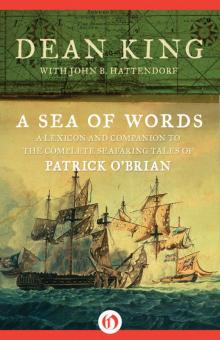 A Sea of Words
A Sea of Words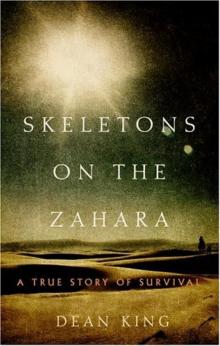 Skeletons on the Zahara
Skeletons on the Zahara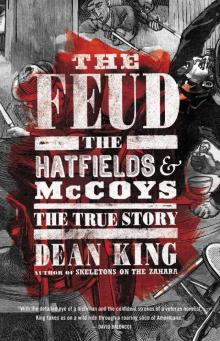 The Feud: The Hatfields and McCoys: The True Story
The Feud: The Hatfields and McCoys: The True Story Every Man Will Do His Duty
Every Man Will Do His Duty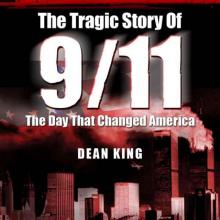 9/11...The Tragic Story of the Day that Changed America: The Terror, The Horror and The Heroes
9/11...The Tragic Story of the Day that Changed America: The Terror, The Horror and The Heroes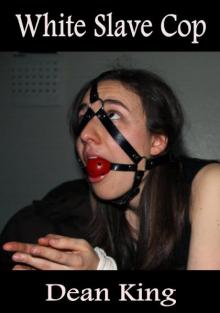 White Slave Cop
White Slave Cop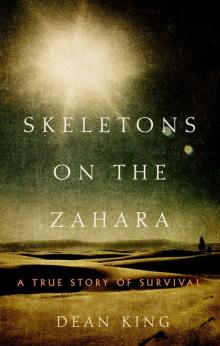 Skeletons on the Zahara: A True Story of Survival
Skeletons on the Zahara: A True Story of Survival